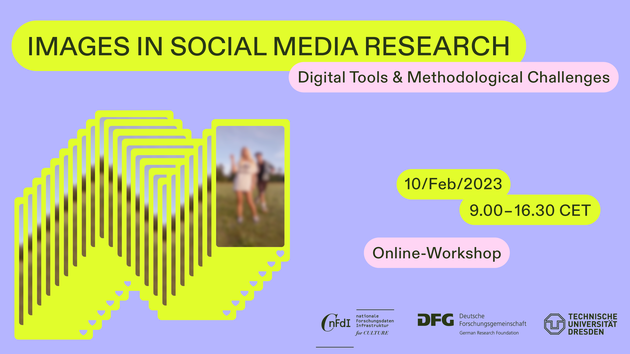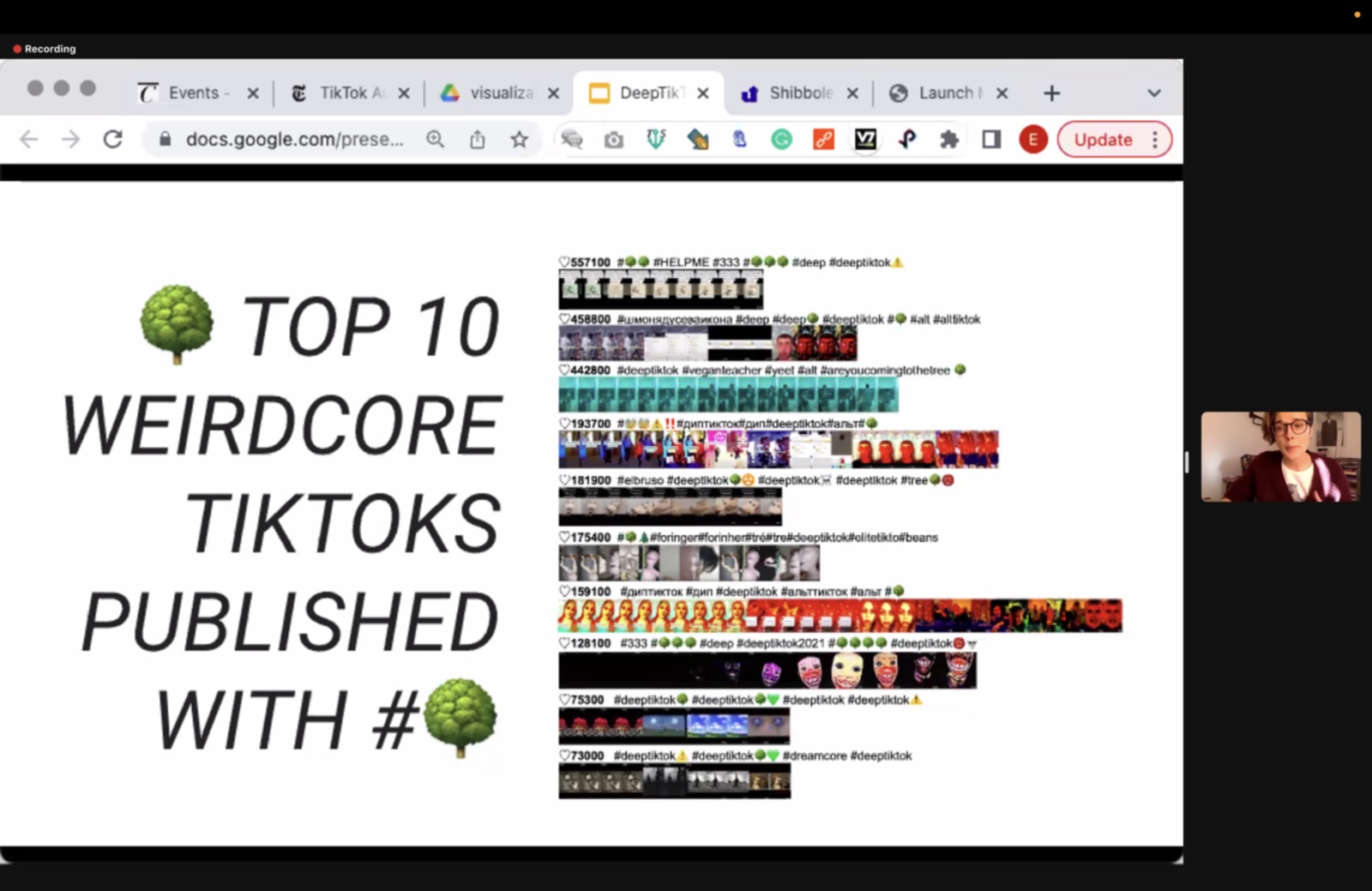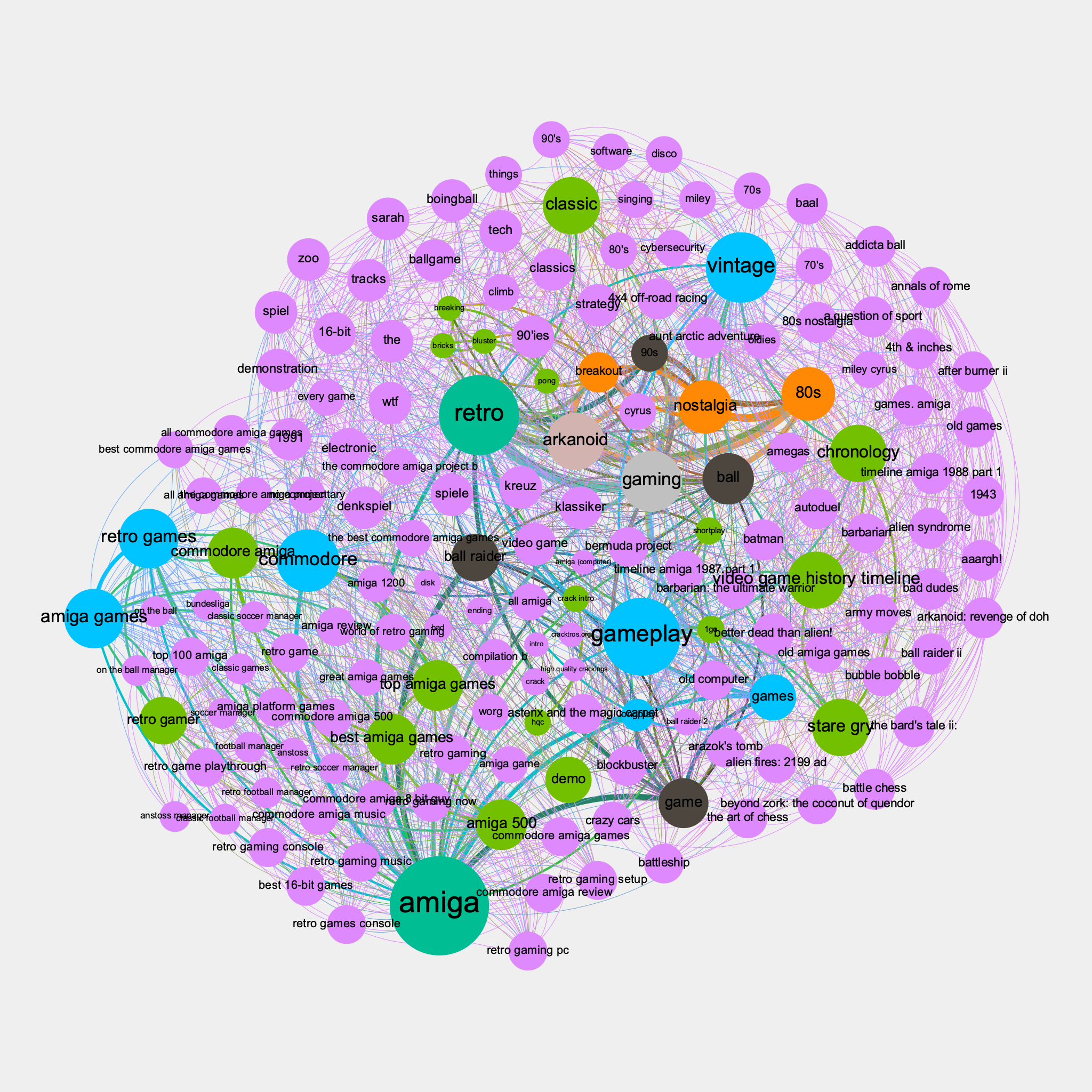11th Feb 2023
I took part in the online-workshop: Images in Social Media Research1. It was structured through brief 15-20 minute-long inputs by various researchers. The topic hovered around digital methodologies derived from content and cultural analysis.

Being new-ish to digital visual studies, I was mainly interested in the practical approaches, the methods and methodologies, as well as the tools in use. The first panel as well as partially the second panel were truly giving in that regard. Starting with Lev Manovich’s input, the workshop drifted into areas I couldn’t directly relate to and as such had a difficult time following at times.
Tools
Some of the fantastic tools and initiatives presented:
- YouTube Data Tools: Query and scrape YouTube for metadata
- 4CAT: Querying and scraping a range of text-based social media platforms. 4CAT also offers amazing analysis tools to work with the scraped data
- zeeschuimer: A Firefox extension that can scrape Instagram, which can then be worked on through 4CAT
- Memespector-GUI: The 3rd iteration of the memespector, enabling the researcher to analyse visual material through computer vision APIs
Methods and methodologies
I was particularly taken by an input by Sabine Niederer. She demonstrated her/their approach through a few projects of the Visual Methodologies Collective:
- Zooming out: Using computational aids and methods, such as content analysis and software, to look for rhythm and patterns and gaining an overview
- Zooming in: ethnographic and close reading approaches to look at specific cases that verify a thesis or demonstrate something in particular. From my point of view, semiology, discourse analysis or ethnographic methods fit here
- Opening up: Working in image research in a participatory and collaboratively manner, such as involving affected communities
Another interesting input, although a bit fuzzy and not reflected in parts, was by Elena Pilipets. She worked on analysing . Besides being an organizational unit, a hashtag, is also a sub-community on TikTok, boasting itself through being especially edgy. Through the presentation, she indicated problems and weaknesses that different computational approaches have, such as using Google Video AI. She also presented an approach how to research networked images, the corner-points being accessible in her presentation slides2, which I preserved here on archive.org.

Afterthought
What did I learn? Well, networked images are a thing. The constitution of visual material today is way more fluid than say, 10 years ago.
I got massively inspired to experiment with some of the tools presented. I could imagine, for example, to scrape social media for contemporary visual material on the games we’re researching. As a quick test, I found a bunch of videos on YouTube on the topic of Ball Raider, grabbed their metadata and visualized their accompanied keywords in Gephi.

Looks pretty, doesn’t answer any questions. It would be interesting to use the metadata and work through the videos with Memespector to see in what kind of contexts the videos are shown.
A point that came up over and over again, was the interconnection between social media image research and platform research. Those two are inextricably linked. All social media today is corporate media, and they decide the access researchers can have. They decide, what data goes out. As such, understand the affordances of the platform you are targeting is paramount. Studying the content of a platform is also studying the platform.
I didn’t follow the ethics part too closely, but I guess this guide to internet research ethics is an important read.
Footnotes
-
https://web.archive.org/web/20230211130250/https://tu-dresden.de/gsw/phil/ikm/kuge/forschung/aktuelle-projekte/bildproteste/news/online-workshop-images-in-social-media-research-digital-tools-and-methodological-challenges ↩
-
Original on Google Slides: https://docs.google.com/presentation/d/1Xa0S2ziF1CqLzn2mQWRsUHGTX4Q9PvdregUTpEFG0Aw/edit#slide=id.g206e03d362b_0_859 ↩